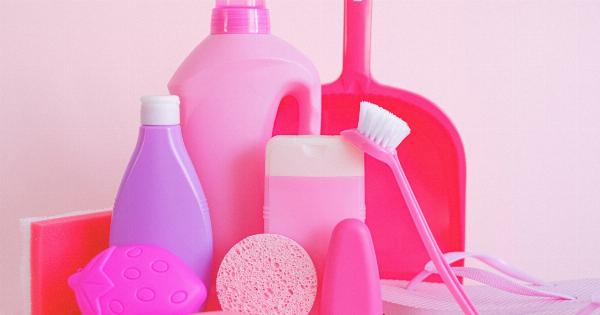Home appliances have undoubtedly made our lives easier and more convenient. They have become an integral part of modern living, helping us with daily chores, saving time, and enhancing our comfort.
However, amidst the numerous benefits they offer, it is crucial to understand that some common home appliances can also pose health risks if not used properly or if they malfunction. In this article, we will explore the potential health dangers associated with everyday home appliances and how to minimize these risks.
1. The Hazards of Microwave Ovens
Microwave ovens are a staple in most kitchens, providing quick and effortless heating and cooking. Nevertheless, it is important to handle them with caution.
When used incorrectly or damaged, microwave ovens can leak harmful electromagnetic radiation, which can pose several health risks including:.
Electromagnetic Hypersensitivity (EHS): Prolonged exposure to electromagnetic fields emitted by malfunctioning or faulty microwave ovens can lead to symptoms such as headaches, dizziness, fatigue, and sleep disturbances.
Individuals already sensitive to electromagnetic fields may be particularly vulnerable.
Food Contamination: Microwaving food in plastic containers or using improper utensils can cause harmful chemicals from plastics to leach into your food, potentially leading to long-term health concerns like hormone disruption and an increased risk of certain diseases.
2. Dangers of Air Conditioners
Air conditioners are essential for maintaining a comfortable indoor temperature during hot weather. However, improper maintenance or prolonged exposure to air conditioning can have negative effects on health:.
Poor Indoor Air Quality: If air conditioning units are not cleaned and maintained regularly, they can become a breeding ground for mold, bacteria, and other allergens.
These pathogens can then circulate through the indoor air, triggering respiratory issues, allergies, and other health problems.
Dry Skin and Eyes: Air conditioners remove moisture from the air, which can lead to dry and itchy skin, dry eyes, and other discomforts. People with existing skin or respiratory conditions may experience exacerbated symptoms.
3. The Dilemma with Washing Machines
Washing machines are undoubtedly a time-saving addition to our homes, making laundry chores much easier. However, they can also pose certain health risks:.
Mold and Mildew: Washing machines provide the perfect damp and warm environment for mold and mildew to thrive.
If not properly cleaned and maintained, these fungi can contaminate your clothing, causing skin irritation, respiratory issues, and allergic reactions.
Chemical Sensitivities: Many laundry detergents and fabric softeners contain harsh chemicals and artificial fragrances that can irritate the skin, trigger allergies, and cause respiratory problems.
People with chemical sensitivities or pre-existing allergies need to be particularly cautious.
4. Potential Risks of Gas Stoves
Gas stoves are a common choice for cooking due to their instant heat and precise temperature control. However, they can present certain health hazards:.
Indoor Air Pollution: Gas stoves release nitrogen dioxide and carbon monoxide, which are harmful gases that can negatively impact indoor air quality.
Prolonged exposure to these pollutants can lead to respiratory problems, headaches, and even more severe health conditions.
Fire Hazards: Gas leaks or malfunctions in the stove can result in hazardous fires or explosions. It is essential to ensure proper ventilation and regular maintenance to minimize such risks.
5. Hidden Emissions from Refrigerators
Refrigerators play a vital role in keeping our food fresh, but they have their own set of health concerns:.
Chemical Emissions: Older refrigerators may contain certain harmful chemicals like chlorofluorocarbons (CFCs) that deplete the ozone layer and contribute to climate change.
Additionally, some newer refrigerators may emit low levels of volatile organic compounds (VOCs) from the plastic parts, which can lead to respiratory issues and allergic reactions.
Bacterial Growth: Improper cleaning and maintenance of refrigerators can lead to the growth of bacteria, including Salmonella and E. coli, which can contaminate food and cause foodborne illnesses.
6. The Noise Pollution from Appliances
Noise pollution may not seem as apparent as other health risks from home appliances, but it can still have detrimental effects:.
Hearing Problems: Constant exposure to high noise levels from appliances such as vacuum cleaners, blenders, and hairdryers can contribute to hearing loss or damage over time.
It is crucial to use ear protection or reduce exposure by maintaining distance.
Stress and Sleep Disruption: Loud noises produced by appliances can lead to chronic stress and sleep disruptions. This can negatively impact mental health, cognitive function, and overall wellbeing.
7. Ensuring Safe Use of Home Appliances
To prevent or minimize the health risks associated with everyday home appliances, it is essential to take some precautionary measures:.
Follow Manufacturer’s Instructions: Read and adhere to the user manuals and guidelines provided by the manufacturers for safe usage, maintenance, and cleaning of appliances.
Regular Maintenance: Keep your appliances clean, well-maintained, and serviced as per the manufacturer’s recommendations to avoid any malfunctioning or health hazards they may pose.
Proper Ventilation: Ensure proper ventilation for appliances that produce gas emissions, such as gas stoves or heaters; this helps minimize the buildup of harmful gases and improves indoor air quality.
Use Safe Materials: Opt for microwave-safe utensils and avoid microwaving food in plastic containers. Choose environmentally friendly cleaning products and detergents that are free from harsh chemicals and fragrances.
Avoid Overuse: Limit excessive and unnecessary usage of appliances to reduce energy consumption, noise levels, and wear and tear, which can ultimately contribute to health risks.
Conclusion
While home appliances undoubtedly make our lives more convenient, it is necessary to be aware of the potential health risks they can pose if not used safely and maintained properly.
By understanding these risks, following manufacturer guidelines, and taking necessary precautions, we can create a healthier and safer environment within our homes. Regular maintenance, safe practices, and mindful usage of home appliances can go a long way in preventing health hazards associated with these everyday conveniences.





























